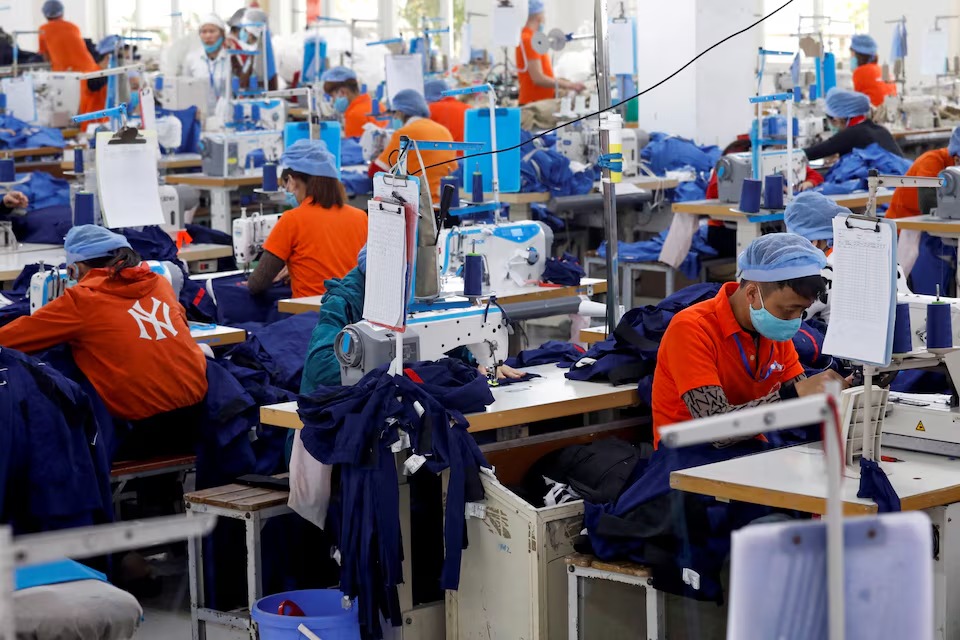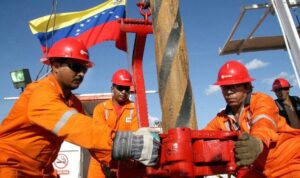
Published 07/04/2025 13:12 | Edited 07/04/2025 18:23
Vietnam Gross Domestic Product (GDP) grew 6.93% in the first quarter of 2025, compared to the same period of the previous year. The data, released by the National Statistics Office (NSO), represents the best result for the period since 2020.
The brand impresses not only for the high pace, but also for the context in which it was achieved: the country already faced global commercial tensions and the expectation of the new tariffs imposed by the United States, its largest commercial partner.
According to NSO director, Nguyễn Thị Hương, the performance is a reflection of the development model based on state planning, centralized coordination and mobilization of party and government structures to maintain economic dynamism. She highlighted the role of the “effective action of the entire political system” in the face of rapid changes in the regional and global scenario.
Although it has exceeded the Government’s goal set in Resolution No. 01/NQ-CP, the result was below the most optimistic scenario designed in Resolution No. 25/NQ-CP, of February this year. NSO itself recognizes that the effects of external uncertainties, such as exchange rate volatility and geopolitical risks, can press the gears of the Vietnamese economy.
State model drives services and industry
The composition of growth reinforces the strategic role of the state as an organizer of economic activity. The sectors of services, industry-construction and bustling agroforestry grew 7.7%, 7.42% and 3.74%, respectively, accounting for 93% of the total expansion of GDP. The transformation industry, considered the main engine of the economy, grew by 9.28% and contributed 2.33 percentage points for overall growth.
In the construction sector, the increase was 7.99%, driven by public investment and financing for large infrastructure projects, especially highways, railways and sanitation. The agricultural sector also presented solid performance, especially forestry, which grew 6.67%.
The service area was favored by the resumption of internal demand and the return of international tourists, especially during the Lunar New Year holiday. Transport and storage grew 9.9%; hosting and food, 9.31%; Wholesale and retailer trade, 7.47%; and the finance and insurance sector, 6.83%.
This diversity of expanding sectors shows that although Vietnam still depend on exports, the country has built a relatively diverse productive basis over the past decades, supported by strong state investment, strategic key control and cooperation between public sector and national private initiative.
Growth under threat: tariffs and deceleration
Despite the robust performance, the coming months will be test for the Vietnamese model. The growth of 6.93% represents slowdown in the last quarter of 2024 (7.55%). The most visible reason is the imposition of a 46% tariff on US government Vietnamese products announced by Donald Trump as part of his new global tariff offensive.
New rates threaten strategic sectors such as textiles, shoes, electronics and smartphones, which concentrate millions of jobs and much of the country’s currency revenue. According to Reuters, if the measure provokes a 10% drop in exports to the US, GDP growth can be reduced by up to 0.84 percentage point.
In addition, there is a risk of direct foreign investment (IED), especially of partners such as South Korea, Japan, China and the United States themselves. Sector reports point out that many multinationals are reevaluating productive expansion plans in Vietnam, given the instability in business relations with Washington.
In a statement, BMI consultancy stated that “vietnam rates are harder than expected and can cause a structural change in the economic model based on exports and foreign capital attraction.”
Government maintains goal and bet on diversification
Even in the face of difficulties, the Vietnamese government maintains the growth target of at least 8% to 2025. In a statement after meeting with local leaders and ministers, Prime Minister Pham Minh Chính has classified tariffs as “a challenge that should be converted into opportunity.”
“We will not change our goals. We will react with serenity, creativity, flexibility and effective action. Our model is solid, and the Vietnamese people have the wisdom, culture and resilience needed to face this moment,” he said.
Chính pointed out that the US is a relevant but not exclusive market. Vietnam has already signed 17 free trade agreements with partners from various regions and aims to accelerate the diversification of productive chains and export destinations. The Premier also determined the acceleration of public investments, the expansion of credit in strategic sectors and the reinforcement in economic diplomacy, including the US itself.
According to him, it is time to “renew traditional growth engines and develop new pillars” such as green industrialization, energy transition, digital and halal, African and Latin American markets.
Integration with Brazil reinforces alternatives
In this scenario, the recent visit of President Luiz Inacio Lula da Silva to Hanoi gains even more relevance. The meeting resulted in the signing of a joint action plan Brazil – Vietnam 2025–2030, focusing on commerce, science, defense, environment and cultural exchange. Lula also proposed the approach of Vietnam with Mercosur, considered strategic to expand relations with Latin America.
“These measures will allow us to expand the flow and investment flows among our countries,” Lula said during a meeting with President Luong Cuong and leaders of the Vietnam Communist Party.
The relationship between Brazil and Vietnam is seen with attention by the Brazilian left as an example of integration between global South economies committed to sovereign development, the role of the state and the construction of a multipolar world order.
Source: vermelho.org.br

